09:05 2020: The Climate Turning Point
Kathryn Ryan talks to Christiana Figueres – the former UN climate chief and a key architect of the 2015 Paris Agreement. Ms Figueres and a team of top climate scientists recently published a report outlining six critical milestones that they say must be met within the next three years. If they're not met, they say there will not be enough time to decarbonise the economy before overshooting tipping points, which could lead to permanent changes in the global climate.

Three scenarios for spending the same budget of 600 Gt CO2, with emissions peaking in 2016 (green), 2020 (blue) and 2025 (red)
Photo: Mission 2020
09:30 100 awe-inspiring images showcasing the natural world
The Wildlife Photographer of the Year exhibition opens at Auckland Museum from today, July 7th, showcasing 100 stunning large-scale photographs celebrating the natural world. As well as a must-see for animal lovers, the images demonstrate the exceptional skill of the people behind the lens. Kathryn Ryan talks to one of those talented finalists, New Zealander Lance Van Der Vyer who now lives in South Africa. Wildlife Photographer of the Year is developed and produced by the Natural History Museum, London.
09:45 Asia correspondent Anna Fifield
Anna reports on the rising tensions over North Korea, and why very little is likely to actually after the latest missile test.
10:05 Exploring Earth's diary
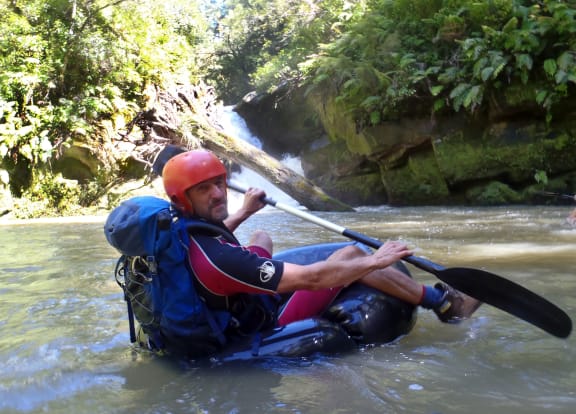

James Crampton hunting dinosaurs in a tributary of the Mohaka River, Hawkes Bay. The truck tube was slowly deflating and became increasingly difficult to ride! Photo credit Julian Thomson, GNS Science
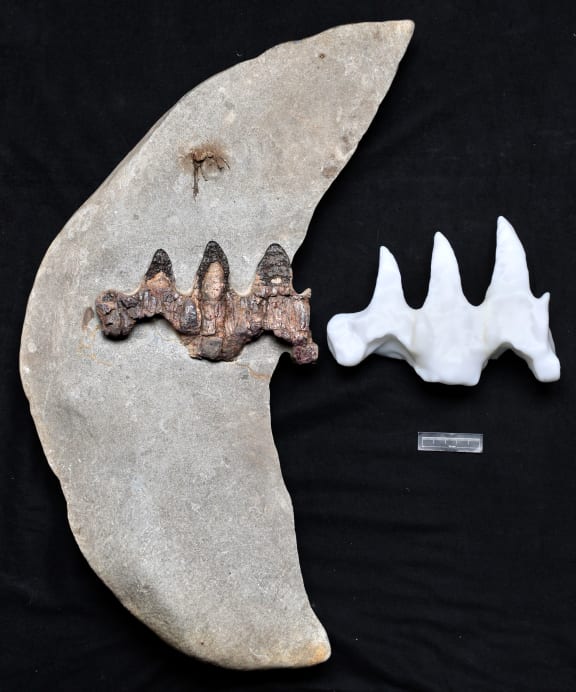

Large block of rock containing mosasaur teeth, collected from the ranges of inland Hawkes Bay. The fossil is about 70-80 million years old. The rock has been scanned in a medical CT scanner and the teeth have been reproduced using a 3D printer. Credit GNS Science.
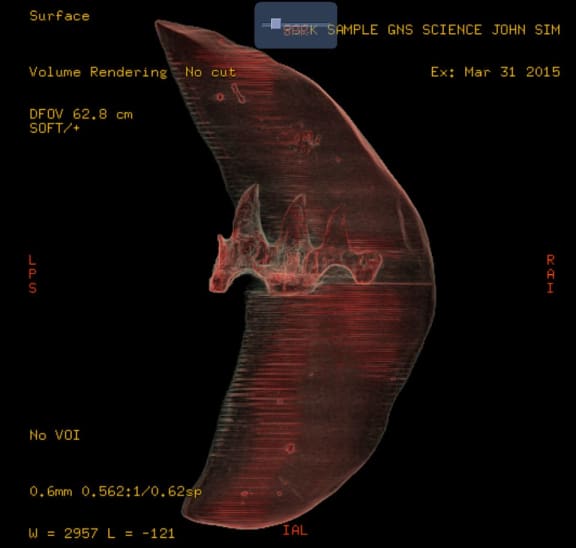

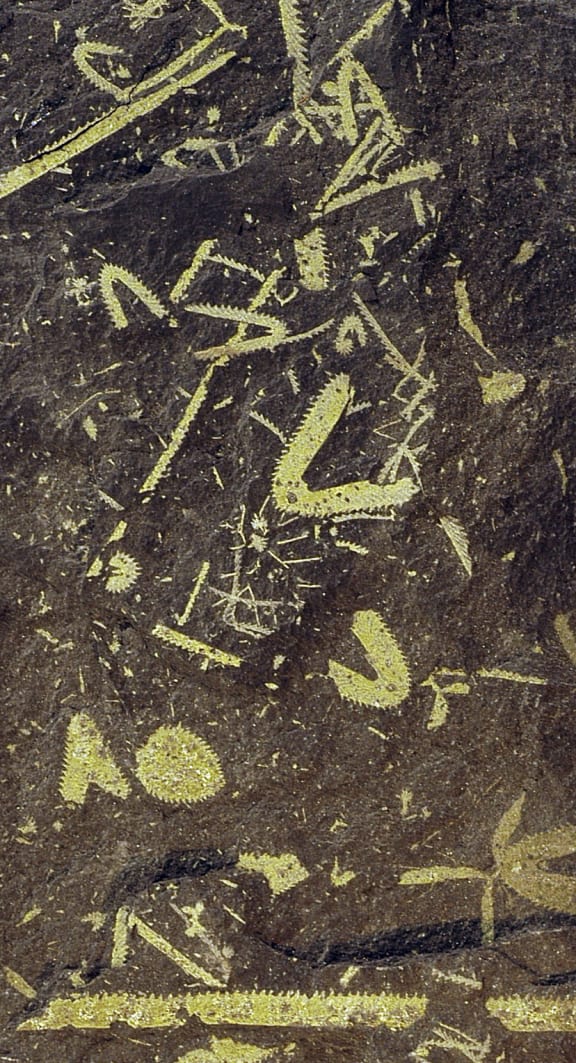

Slab of rock from Golden Bay, showing many specimens and several different species of fossil graptolite. Graptolites were a type of colonial animal that lived floating in the ocean. In life, each “tooth” on a colony corresponded to a small cup that contained one animal, and the colonies housed many animals. These animals used tentacles to feed on particles of food in the water. Each colony has been flattened during the fossilisation process, so that now the colonies look like drawings on the rock. The graptolites were a major component of the oceanic ecosystem between about 500 and 400 million years ago, during the Paleozoic Era. Although they were a diverse and ‘successful’ group of organisms for about 80 million years, they became extinct 411 million years ago. The long dimension of the slab is 18 cm
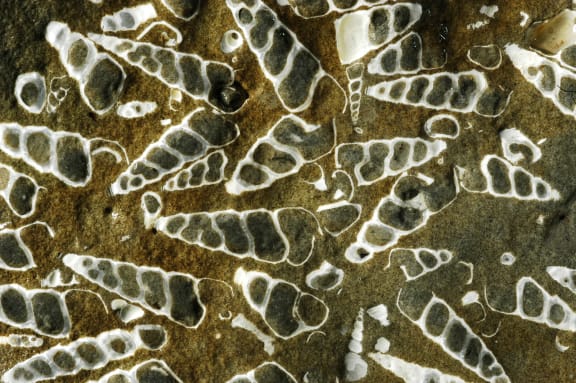

Fossil turret shells from Hurupi Stream, southern Wairarapa. The snails are encased in rock and have been partially worn through, so you are looking at cross-sections of the shells. The species is called Zeacolpus taranakiensis and these animals lived on the sea floor about 10 million years ago, in a shallow sea that covered much of the lower North Island. Each snail is 1-2 cm long.
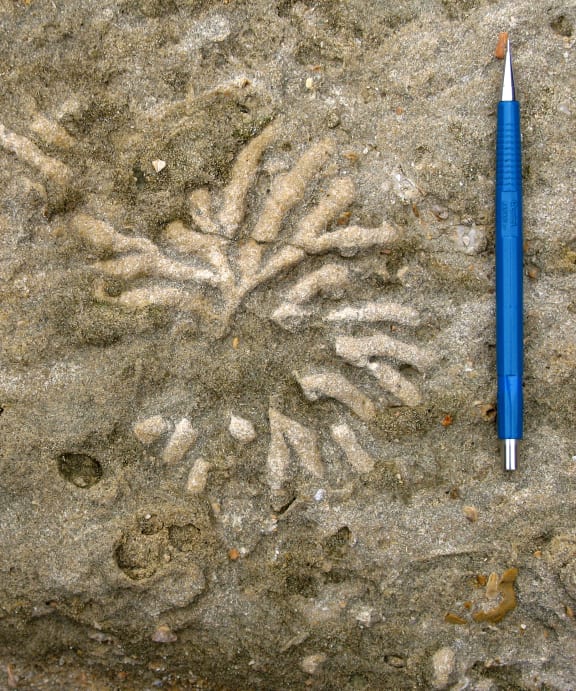

A different sort of fossil: this is a trace fossil – the marks left in sediment by the activities of an animal. In this case, some form of worm-like animal was burrowing within sea-floor sand, forming a set of radiating chambers that were subsequently infilled with different coloured sediment and preserved once the sand was turned to rock. These burrows are about 4 million years old and were observed on the coast of Hawkes Bay. Dinosaur footprints are another sort of trace fossil. Credit James Crampton
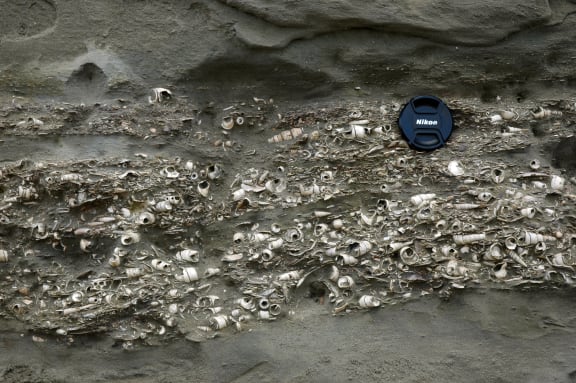

Bed of fossil molluscs (snails and clams and their kin) at White Rock River, Canterbury. The larger visible fossils are mostly the turret snail Tropicolpus abscisus, but there are many other species present also. These fossils are about 18 million years old. This shellbed illustrates a tiny part of New Zealand’s stunning fossil record of marine molluscs of the past 50 million years, which is the best in the Southern Hemisphere for this interval of time. The richness of this fossil record allows New Zealand paleontologists to tackle some fundamental questions about the nature of life on Earth and also the nature of the fossil record itself.
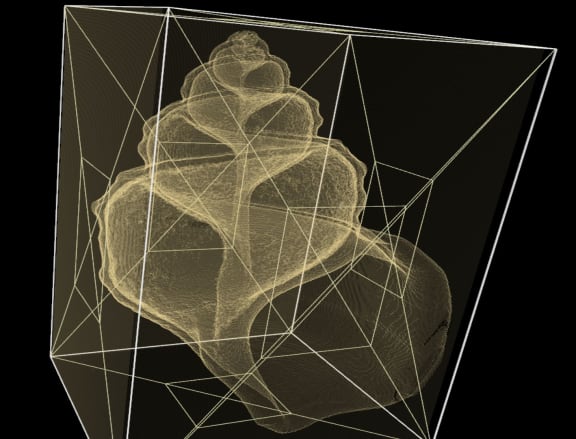

The future of paleontology? Snails are, today, one of the most biodiverse groups of organisms in the oceans. This is a 0.63 million-year-old fossil snail, Pelicaria vermis, that has been scanned in a high-tech scanner called a synchrotron and digitally removed from the rock, so that it can be studied inside and out and analysed mathematically. This work, by my former PhD student Katie Collins, aims to clarify just how, and how fast, snails evolve. Credit: Katie Collins, Chicago University
Evolution, extinction, competition, catastrophes – it's all somewhere to be found in the remarkable, but damaged, 600 million year-old fossil record. Now, using state of the art quantitative tools, palaeontologists are increasingly improving their understanding of it – or, as Victoria University's Professor James Crampton likes to call it, "Earth's diary."
Most recently, in partnership with Ngai Tuhoe and GNS Science, Professor Crampton has been working to explore evidence of dinosaur fossils in Te Urewera.
10:35 Book review
Rachel Eadie reviews Dragon Defenders by James Russell.
10:45 The Reading
11:05 New music with Jeremy Taylor
Jeremy Taylor savours new releases from locals Grawlixes and Reb Fountain, together with a new set from American singer-songwriter Kevin Morby, and a 30th anniversary re-issue from his favourite band, The Smiths.

Photo: Composite
11:30 Sports commentator Brendan Telfer
The home-coming of the America's Cup and the final showdown between the All Blacks and the British & Irish Lions, possibly the best two teams on the planet.
11:45 The week that was with James Nokise & Pinky Agnew
































































